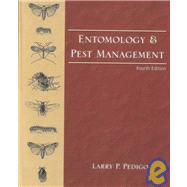
|
1 | (34) | |||
|
35 | (44) | |||
|
79 | (66) | |||
|
145 | (30) | |||
|
175 | (36) | |||
|
211 | (44) | |||
|
255 | (34) | |||
|
289 | (24) | |||
|
313 | (34) | |||
|
347 | (34) | |||
|
381 | (60) | |||
|
441 | (36) | |||
|
477 | (30) | |||
|
507 | (28) | |||
|
535 | (26) | |||
|
561 | (32) | |||
|
593 | (22) | |||
| Appendix 1: Key to the Orders of Insecta | 615 | (6) | |||
| Appendix 2: List of Some Insects and Related Species Alphabetized by Common Name | 621 | (36) | |||
| Appendix 3: List of Some Insecticides by Common and Registered Trade Name | 657 | (8) | |||
| Appendix 4: World Wide Web Sites of Entomological Resources | 665 | (44) | |||
| Glossary | 709 | (24) | |||
| Index | 733 |
The New copy of this book will include any supplemental materials advertised. Please check the title of the book to determine if it should include any access cards, study guides, lab manuals, CDs, etc.
The Used, Rental and eBook copies of this book are not guaranteed to include any supplemental materials. Typically, only the book itself is included. This is true even if the title states it includes any access cards, study guides, lab manuals, CDs, etc.